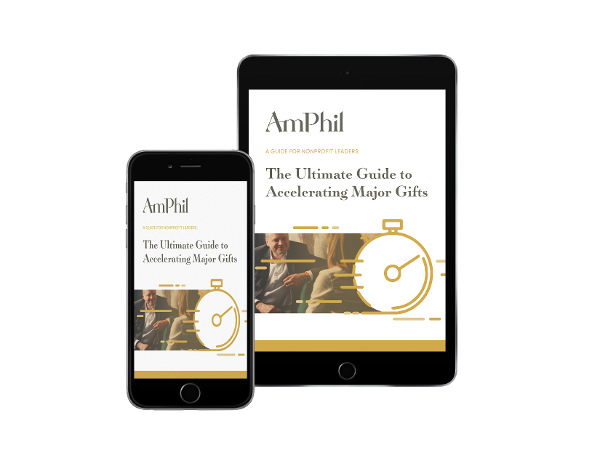
Most nonprofit fundraisers would be overjoyed to expand the number of major individual and foundation donors who give to their organization, but that’s easier said than done. Why? Well, it’s not always easy to identify your best major individual donor or foundation prospects . . . and identifying those prospects is an essential step in catalyzing your growth and shoring up the long-term financial health of your organization.
No need to feel defeated, though! The following four tips are the keys to a solid start as you embark on your major donor identification journey. These may seem like a lot of work behind the scenes, but remember this: when asked in person, most donors will consider a gift 10x their latest direct response giving. Your research and perseverance is worth it.
1. Clean Up Your Nonprofit Database or CRM.
We all know how difficult it can be to keep a database or CRM “clean.” There are usually multiple people with varying degrees of skill contributing to the software's information, meaning there are myriad chances for the data to be accidentally duplicated, deleted, or left incomplete.
The first step in your search for potential individual and foundation major donors should be a clean-up of your donor database, including:
- Updating contact information for each donor. For addresses and phone numbers, the National Change of Address (NCOA) can be helpful.
- Consolidating or deleting (depending on accuracy) duplicated records.
- Filling in missing donor information.
- Utilizing fields to indicate a donor’s average donation amount, which can help with reporting and list segmentation down the road.
Trust us, unless your organization is almost solely populated by operations-oriented, tech-savvy staff members, it's worth paying close attention to data maintenance.
2. Consider Consistent Mid-Tier Donors.
The “mid-tier” category of gifts is of course relative to the size of your organization. Identify your unique range of middle-of-the-road, regular giving. The donors responsible for those gifts are invested in your mission and have a good chance of being able to upgrade to major donor status.
We recommend identifying these types of donors not only because they may upgrade, but because donor retention is extremely important to the fundraising health of your organization. Make sure they aren't left by the wayside just because they aren't giving large gifts right now. Investing in relationships with consistent mid-tier givers like these through thank-you's and other forms of recognition will help them become invested in your organization's mission and perhaps upgrade their giving down the road.
All of that to say: add your best mid-tier donors to a consistent communication strategy and don’t be afraid to ask for a giving upgrade IF they fit potential high-giving indicators found through research (more on that later). Done politely, and after relationship building, even your “no’s” will frequently become “not yet’s.”
3. Research Wealth Indicators.
Here’s where a correctly entered address in your database will come in handy. Property ownership is one of the most solid wealth indicators, and this information is easy to access. All you need is a correct address and a quick look at Zillow to research property values in their area. According to DonorSearch, “someone who owns real estate worth $1–$2 million is 4 times more likely to donate than the average person.”
Additionally, social media profiles, news articles, annual reports, and dedicated research tools can help you uncover giving history and other wealth indicators, such as the ownership of a boat or a plane. DonorSearch is a great tool for this stage and type of research.
4. Check on Your Donors’ Philanthropic Interests.
In tandem with your database wealth screen it’s important to pull information about your prospective donors’ philanthropic interests. This could run the gamut from politically or religiously affiliated organizations, to animal welfare or local arts.
Decide if their past giving indicates, or at least opens the possibility of, mission alignment with your organization. It’s crucial that when planning to approach a major donor prospect you have some context and insight into the things they care about.
Combine aligned philanthropic interests with wealth indicators, and you have a promising major donor prospect.
Bonus: Enlist Outside Help to Accelerate Your Major Gifts Program’s Expansion.
The above tips do require a sizeable time commitment from a skilled major gifts officer. However, if your organization doesn't have such a major gifts officer, or simply doesn’t have the capacity for this type of in-depth research, it might be worth looking for experts to help you build the most successful version of your major gifts program.
Database management and a major gifts accelerator are excellent options offered by experts for a nonprofit crunched on time and resources. Your major gifts program is worth your nonprofit's time, attention, and investment.


